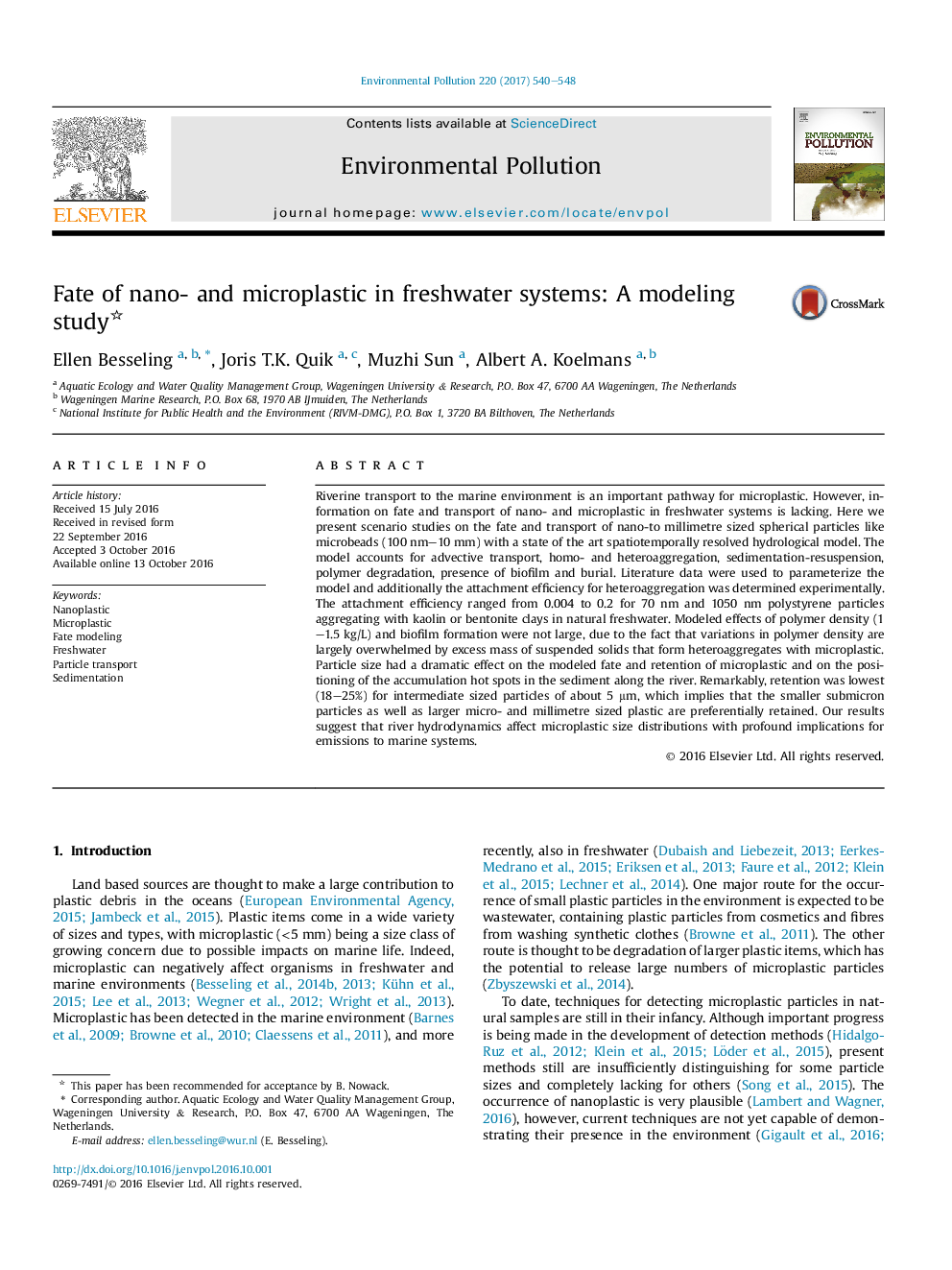| Article ID | Journal | Published Year | Pages | File Type |
|---|---|---|---|---|
| 5749248 | Environmental Pollution | 2017 | 9 Pages |
â¢We performed the first modeling study on the fate of nanoplastic and microplastic in rivers.â¢The fate and retention of e.g. tyre dust or cosmetics ingredients can be simulated.â¢Aggregation-sedimentation and Stokes settling drive the retention in rivers.â¢Particle size affects retention, and location of accumulation hot spots in sediment.â¢River hydrodynamics has profound implications for the emission of plastic to sea.
Riverine transport to the marine environment is an important pathway for microplastic. However, information on fate and transport of nano- and microplastic in freshwater systems is lacking. Here we present scenario studies on the fate and transport of nano-to millimetre sized spherical particles like microbeads (100 nm-10 mm) with a state of the art spatiotemporally resolved hydrological model. The model accounts for advective transport, homo- and heteroaggregation, sedimentation-resuspension, polymer degradation, presence of biofilm and burial. Literature data were used to parameterize the model and additionally the attachment efficiency for heteroaggregation was determined experimentally. The attachment efficiency ranged from 0.004 to 0.2 for 70 nm and 1050 nm polystyrene particles aggregating with kaolin or bentonite clays in natural freshwater. Modeled effects of polymer density (1-1.5 kg/L) and biofilm formation were not large, due to the fact that variations in polymer density are largely overwhelmed by excess mass of suspended solids that form heteroaggregates with microplastic. Particle size had a dramatic effect on the modeled fate and retention of microplastic and on the positioning of the accumulation hot spots in the sediment along the river. Remarkably, retention was lowest (18-25%) for intermediate sized particles of about 5 μm, which implies that the smaller submicron particles as well as larger micro- and millimetre sized plastic are preferentially retained. Our results suggest that river hydrodynamics affect microplastic size distributions with profound implications for emissions to marine systems.
Graphical abstractDownload high-res image (466KB)Download full-size image
